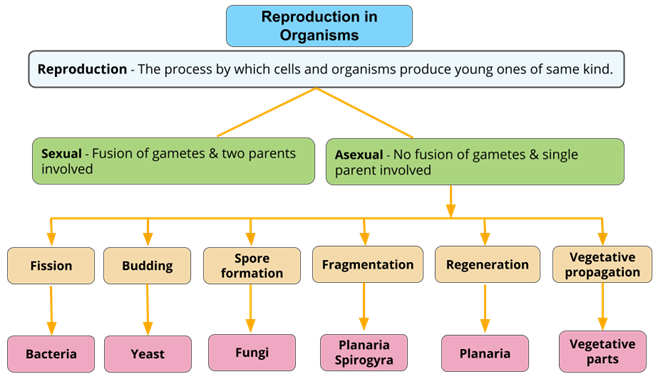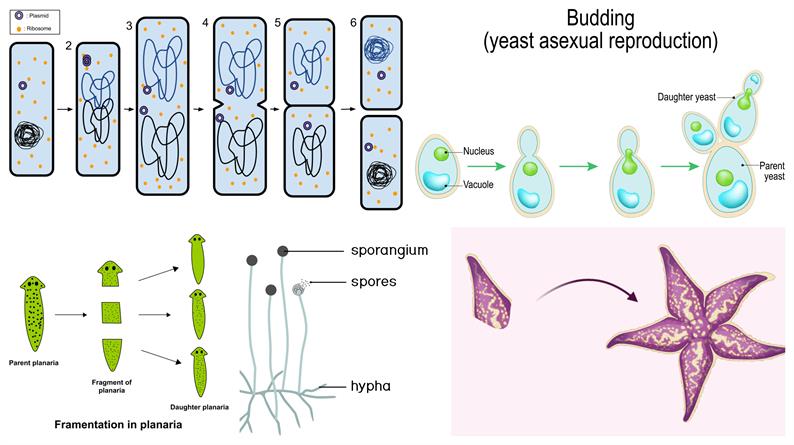
PUMPA - SMART LEARNING
எங்கள் ஆசிரியர்களுடன் 1-ஆன்-1 ஆலோசனை நேரத்தைப் பெறுங்கள். டாப்பர் ஆவதற்கு நாங்கள் பயிற்சி அளிப்போம்
Book Free DemoBased on the structural complexity, physiology and habitat of the organisms, reproduction is divided into two types:
1. Asexual reproduction
2. Sexual reproduction

Types of reproduction
Asexual reproduction:
In asexual reproduction, offspring are produced by a single parent (uniparental), and there is no fusion of gametes. Thus, the offspring produced are exact copies of the parent.
As only somatic cells are involved, it is also called somatogenic reproduction. The asexual mode of reproduction is confined only to the unicellular organisms, lower organisms and plants. It is absent in vertebrates and higher invertebrates.
Characteristics of Asexual reproduction:
1. A single parent is involved in the process of reproduction (uniparental).
2. Gametes are not produced.
3. There is no fertilisation process, and thus called agamogenesis or agamogeny.
4. In asexual reproduction, only mitotic cell divisions are involved.
5. Asexual reproduction is quick and is a rapid mode of multiplication.
The process of asexual reproduction occurs through:
a. Binary fission
b. Fragmentation
c. Budding
d. Spore formation
e. Regeneration

Types of asexual reproduction: Clockwise from top left: Binary fission, Budding, Regeneration, Spore formation, and Fragmentation
Advantages of asexual reproduction:
1. It involves a simple process of division and mitosis.
2. A quick mode of reproduction.
3. A single parent can produce a large number of offspring.
4. The produced daughter cells are genetically similar to their parent.
Disadvantages of asexual reproduction:
1. There is no variation as there is no mixing of genetic material.
2. As variations do not take place, asexual reproduction has no role in evolution.
3. As there is rapid multiplication, it may cause overcrowding and overpopulation.
4. Organisms produced through asexual reproduction has low resistance or adaptability to a changing environment.
Reference:
https://upload.wikimedia.org/wikipedia/commons/4/49/Binary_Fission.png
https://commons.wikimedia.org/wiki/File:Disk-Independent_Bidirectional_Regeneration.png